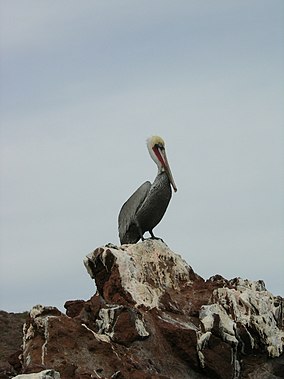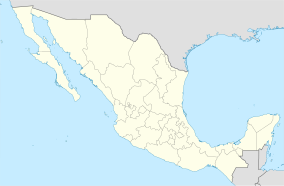El Vizcaino Biosphere Reserve
| El Vizcaíno Biosphere Reserve | |
|---|---|
|
IUCN category VI (protected area with sustainable use of natural resources)
|
|

A pelican on the coast of the El Vizcaíno Biosphere Reserve
|
|
|
Location in Mexico
|
|
| Location | Baja California Sur, Mexico |
| Nearest city | Mulegé Municipality |
| Coordinates | 27°47′32″N 114°13′40″W / 27.79222°N 114.22778°WCoordinates: 27°47′32″N 114°13′40″W / 27.79222°N 114.22778°W |
| Area | 55,555 km2 (21,450 sq mi) |
| Established | 1988 |
| UNESCO World Heritage Site | |
| Criteria | (x) |
| Reference | 554 |
| Inscription | 1993 (17th Session) |
|
[]
|
|
The El Vizcaíno Biosphere Reserve, created in 1988, is located in Mulegé Municipality in northern Baja California Sur, at the center of the Baja California Peninsula between the Pacific Ocean and the Gulf of California. With a landmass of over 9,625 square-miles (24,930 square km), it is the largest wildlife refuge in Mexico and borders on the northern edge of the Valle de los Cirios Protected Area of Flora and Fauna.
The Cochimi first inhabited this region over eleven thousand years ago, nomads who came from the north of the American continent. These nomadic wanderers lived in the protection of caves in the Sierra San Francisco mountain range. Travelers making the trek into this mountainous region can still see their cave art.
The animals and plants of this territory have adapted themselves to the region’s extreme desert conditions with little rainfall, intense winds and an ecosystem which has produced thousands of endemic species of plants and animal life found nowhere else in the world.
Animals that have adapted to these extreme conditions include a variety of nocturnals such as coyotes, rodents, and hares; others have adapted to only ingesting water from succulents. Outstanding among the mammals is the Baja California pronghorn (Antilocapra americana peninsularis), an endemic subspecies of the Pronghorn, which is one of the swiftest mammals on Earth. The last populations of this subspecies can be found in the region. The Vizcaíno is also the habitat of the desert bighorn sheep (Ovis canadensis nelsoni), Mule deer (Odocoileus hemionus peninsulae), and dozens of resident and migratory birds. Of special importance: the ospreys, cormorants, herons, and gulls—and four species of sea turtles. On the coastline and islets there are many marine mammals, such as northern elephant seals (Mirounga angustirostris), California sea lions (Zalophus californianus), dolphins, and gray whales (Eschrichtius robustus).
...
Wikipedia

